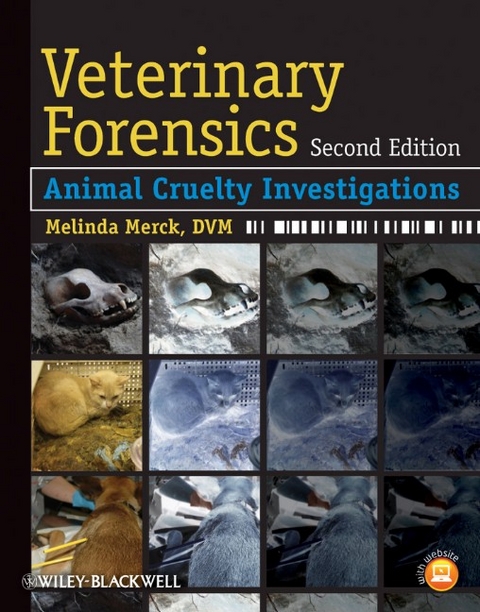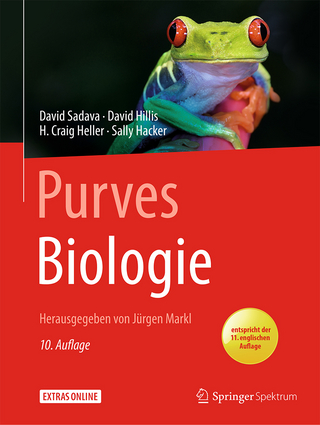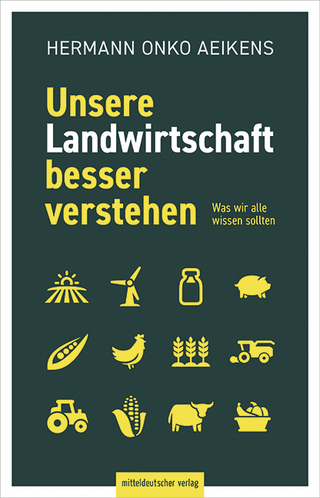
Veterinary Forensics
Wiley-Blackwell (Verlag)
978-0-470-96162-9 (ISBN)
Veterinary Forensics, Second Edition is a practical reference on applying veterinary forensic findings in animal cruelty cases. Now providing a greater focus on findings in animals, the second edition continues to offer guidance with more detailed information on crime scene investigation, forensic testing and findings, handling evidence, and testifying in court. Key changes to the new edition include new chapters on abuse in large animals, poultry, and birds; a standalone chapter on entomology; a new section on large scale cruelty investigation; an expanded section on pain and suffering; more pathology information; and more photos, forms, and information throughout.
Logs and workbooks from the book are available on a companion website at www.wiley.com/go/vetforensics, allowing readers to download, customize, and use these forms in forensics investigations. Veterinary Forensics is an essential resource for veterinarians, pathologists, attorneys, and investigators working on animal abuse cases.
Melinda Merck, DVM, is owner of Veterinary Forensics Consulting, LLC in Atlanta, Georgia.
List of Contributors xiii
Foreword xv
Preface xvii
Acknowledgments xix
1 The Legal System: The Veterinarian’s Role and Responsibilities 1
Introduction 1
Defining Animal Cruelty 1
Governing Laws 2
How Veterinarians Become Involved 2
Search and Seizure 7
Handling the Media in Animal Cruelty Cases 7
Confidentiality 7
Filing Criminal Charges and Hearings 8
Non-Criminal Cases 10
Trial 11
Compensation for the Veterinarian 15
Conclusion 16
2 Crime Scene Investigation 17
Introduction 17
The Veterinarian’s Role and Handling of Animals at the Crime Scene 18
General Considerations for Crime Scene Processing 19
Environment: Weather Data 19
Photography and Videography 20
Evidence Recognition and Documentation 21
Evidence Collection and Packaging 23
Exclusionary Biological Testing 24
Blood Evidence 25
Burial Scenes: Grave Detection, Mapping, and Excavation 29
3 CSI: Examination of the Animal 37
General Considerations 37
Determining Non-Accidental Injury 38
Behavioral Considerations of Animals 41
Evidence Documentation, Collection, and Packaging 41
Chain of Custody 41
Photography and Videography 42
Examination and Documentation of the Live Animal 43
External Examination 43
Forensic Necropsy 47
Special Considerations 58
The Forensic Report 62
4 Special Considerations in Animal Cruelty Cases 69
Large Scale Cruelty Cases 69
Trace Evidence 77
Forensic Botany 79
DNA: Deoxyribonucleic Acid 81
Animal Death/Injury in Human Suspicious Death/Injury Cases 83
Other Unique Identifiers of Animals 84
Münchausen Syndrome by Proxy 84
Suffering 86
Pain 90
Suggested Reading on Pain in Animals 95
5 Blunt Force Trauma 97
Overview 97
Bruising/Contusions 98
Abrasions 101
Lacerations 103
Ligature Injuries 103
Avulsion Injuries 104
Fractures 105
Motor Vehicle Accident (MVA) Injuries 106
Fall Injuries 107
Swinging/Dragging Injuries 108
Grooming-Associated Injuries 108
Blunt Force Injuries to Specific Body Regions 109
6 Sharp Force Injuries 123
General Considerations 123
Stab Wounds 124
Incised-Stab Wounds 128
Incised Wounds 128
Chop Wounds 129
Mutilations, Predator Attacks, and Dog Attacks 130
Ritualistic Crimes 134
7 Burn-, Electrical-, and Fire-Related Injuries 139
Interpreting Burn Patterns 139
Recognition and Collection of Evidence 139
Burn Classification 140
Systemic Effects of Burns 141
General Microscopic Examination Findings in Burns 141
Thermal Burns 141
Chemical Burns 144
Electrical Burns 145
Fire-Related Injuries 146
8 Firearm Injuries 151
Introduction 151
Overview of Firearms 151
Wound Ballistics 154
Determining Entrance and Exit Wounds 155
Determining Gunshot Range 158
Examination of Gunshot Victims 165
9 Asphyxia 169
Overview of Asphyxia 169
General Findings in Asphyxia 169
Suffocation 170
Strangulation 172
Mechanical Asphyxia 178
Drowning 178
10 Poisoning 185
Overview of Intentional Poisonings 185
Evidence and History 186
Diagnostics 188
Agents Used in Animal Poisonings 190
Summary 204
11 Neglect 207
Introduction 207
Environment Examination 208
Malnutrition: Improper Feeding 209
Malnutrition: Starvation 210
Animal Hoarders and Animal Sanctuaries 219
Puppy Mills 222
Heat Stroke 223
Hypothermia 226
Embedded Collars 230
Demodicosis 230
Untreated Injuries 230
12 Sexual Abuse 233
Overview 233
Considerations for Crime Scene Investigation 234
Assessment of Videos 235
General Examination Findings 235
Examination Procedures 236
Suspicious Examination Findings 238
Zoonotic Disease 238
Evaluation and Differentiation of Human and Canine Sperm and Semen 239
13 Animal Fighting 243
Overview of Dog Fighting 243
The Fighting Dog 243
Fighting Classifications 245
The Fight and The Dog Fighting Pit 245
Training and Fighting Paraphernalia 246
Canine CODIS: Fighting Dog Combined DNA Index System 247
Examination of the Animal 247
Cockfighting 250
Other Types of Animal Fighting 252
14 Postmortem Changes and the Postmortem Interval 255
Overview 255
Examination of the Body 255
Determining the PMI: Examination of the Crime Scene 269
15 Forensic Entomology: The Use of Insects in Animal Cruelty Cases 273
Introduction 273
Principles of Medicolegal Entomology 274
Cutaneous Myiasis: The Insect Colonization of Live Animals 276
Other Uses for Insects in Animal Cruelty Investigations 278
Collection of Insect Evidence 279
Summary 284
16 Large Animal Cruelty 287
Introduction 287
Assessing Pain and Suffering 287
Investigation of Cruelty 288
Starvation 289
Body Condition Scoring 290
Evaluation of Water 291
Hoof Care 291
Dental Care 294
Shelter 296
Accidental and Non-Accidental Injuries 297
17 Avian Cruelty 299
Pet Bird Cruelty 299
Avian Abuse Defined 299
Intentional Abuse 300
Unintentional Abuse 301
Veterinary Abuse 302
Poultry Cruelty 303
General Exam Findings in Pet Bird and Poultry Cruelty 307
Appendices 311
1. Colorado Veterinary Medical Association Protocol for Mandatory Reporting of Animal Cruelty and Animal Fighting 311
2. Case Status Form 318
3. Evidence Log/Chain of Custody Form 319
4. Photo Log 321
5. Animal Cruelty Forensic Supplies 322
6. Clandestine Burial Crime Scene Checklist 324
7. Veterinarian Crime Scene Checklist 326
8. Deceased Animal Intake Questionnaire 327
9. Live Animal Intake Questionnaire 328
10. Live Exam Form 329
11. Necropsy Exam Form 330
12. Fixed Tissue List for Histopathology 333
13. Canine Body Condition Score for 1–9 and 1–5 Scales 334
14. Feline Body Condition Score for 1–9 and 1–5 Scales 335
15. Dog Diagram: Condition of Skin, Haircoat, and Nails Form 336
16. Cat Diagram: Condition of Skin, Haircoat, and Nails Form 338
17. Cat Skeleton Lesions Form 340
18. Dog Skeleton Lesions Form 341
19. Cat and Dog Skeletal Inventory Form 342
20. Live Exam Report Template 344
21. Necropsy Report Template 345
22. Forensic Medical Protocol for Large Scale Cases 348
23. Large Scale Medical Supply List 352
24. Large Scale Live Animal Exam Form 356
25. Rapid Bird Exam Form 358
26. Botany Field Report 359
27. Dog Bite Investigation Worksheet 360
28. Basic Small Pet Bird Care in Temporary Shelters 366
29. Tuft’s Animal Care and Condition Scale for Dogs 368
30. Tufts Animal Care and Condition Scale for the Environment 370
31. Dogfighting Terminology 372
32. Cajun Rules for Dogfighting 374
33. Dogfighting Scar and Injury Chart 376
34. Cockfighting Scar and Injury Chart 377
35. Examples of Vitamins, Drugs, and Medical Supplies Used in Dogfighting 378
36. Entomology Form for Animal Cases 380
37. Webliography 383
Index 387
| Verlagsort | Hoboken |
|---|---|
| Sprache | englisch |
| Maße | 185 x 246 mm |
| Gewicht | 907 g |
| Themenwelt | Naturwissenschaften ► Biologie |
| Veterinärmedizin | |
| ISBN-10 | 0-470-96162-7 / 0470961627 |
| ISBN-13 | 978-0-470-96162-9 / 9780470961629 |
| Zustand | Neuware |
| Haben Sie eine Frage zum Produkt? |
aus dem Bereich


